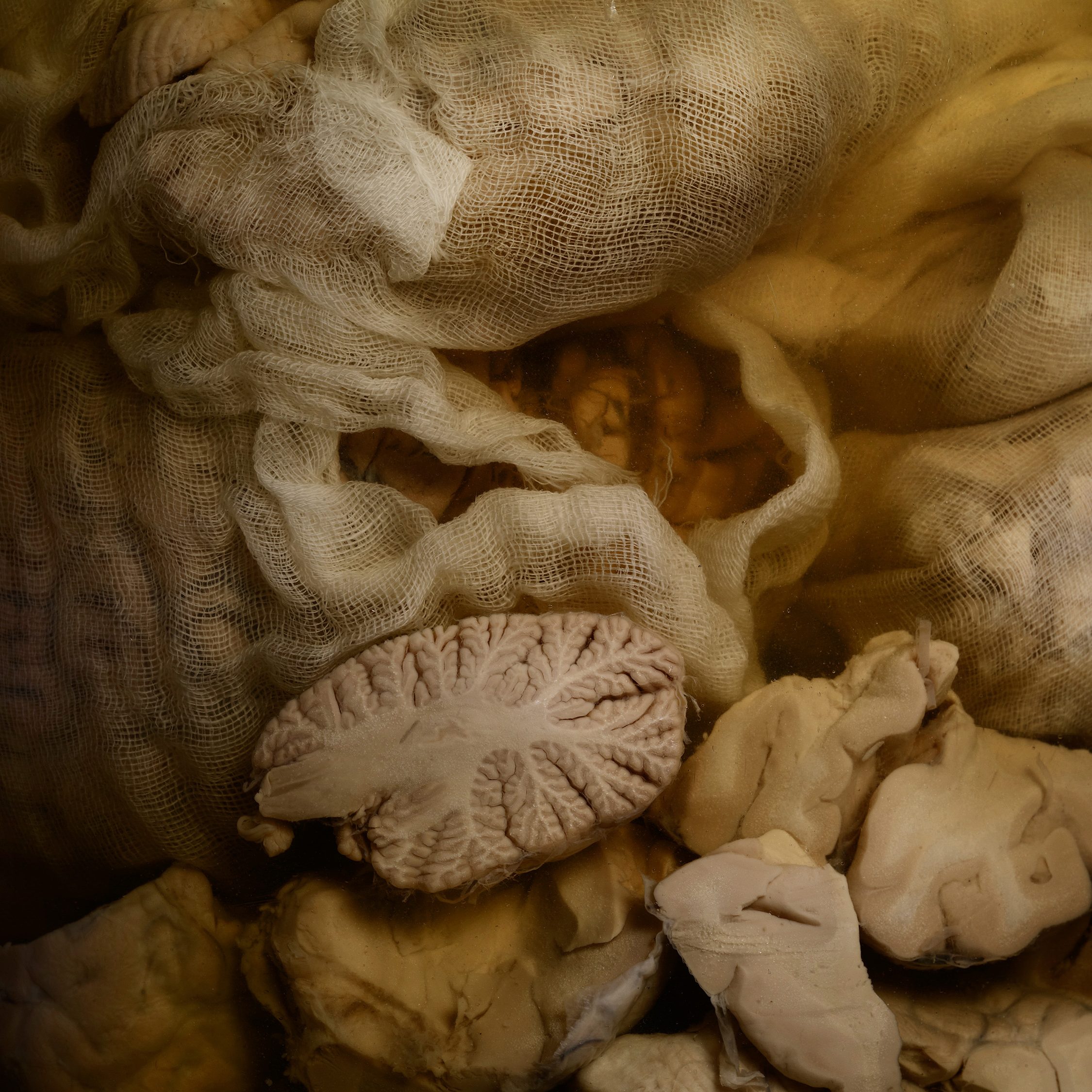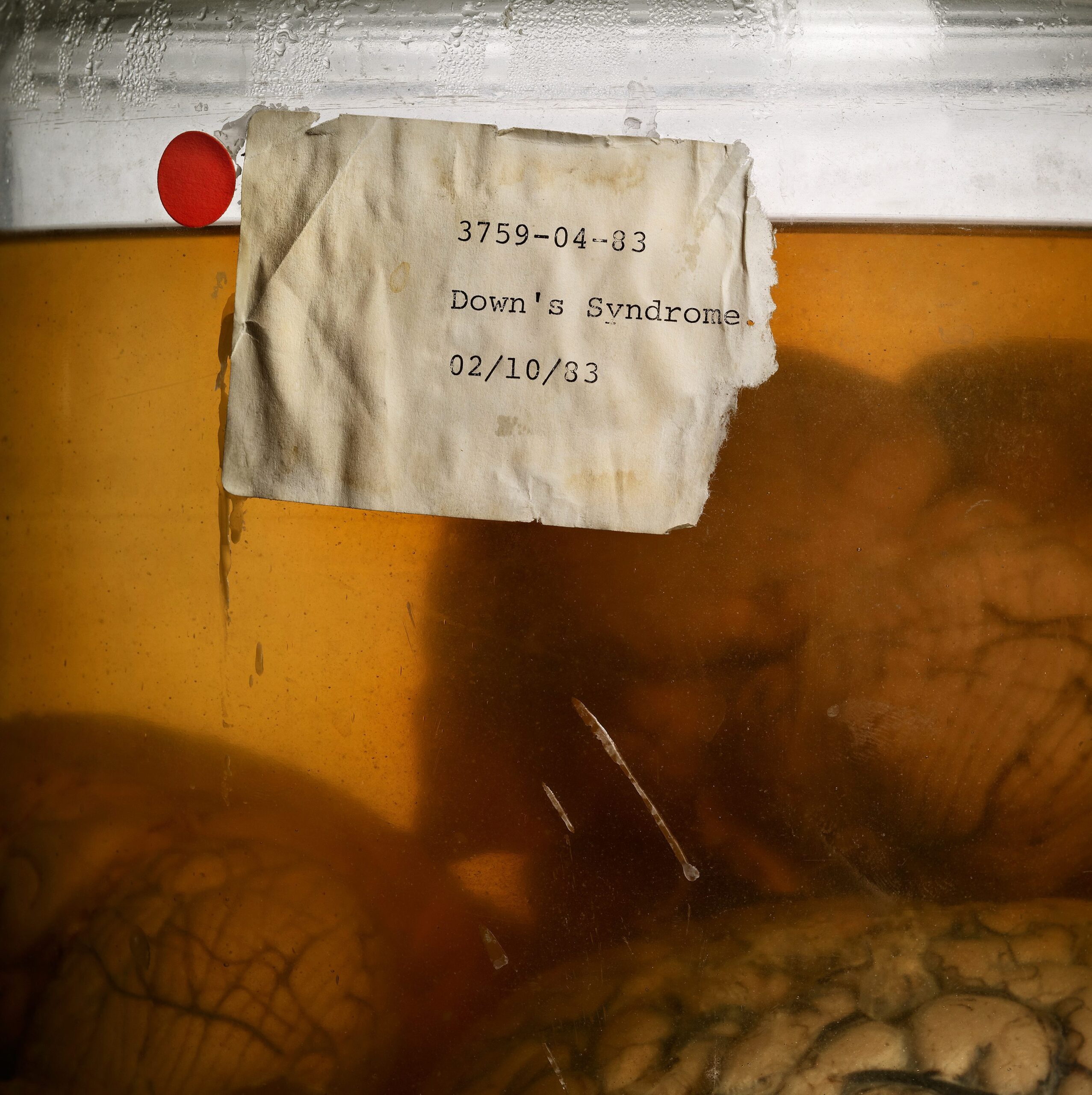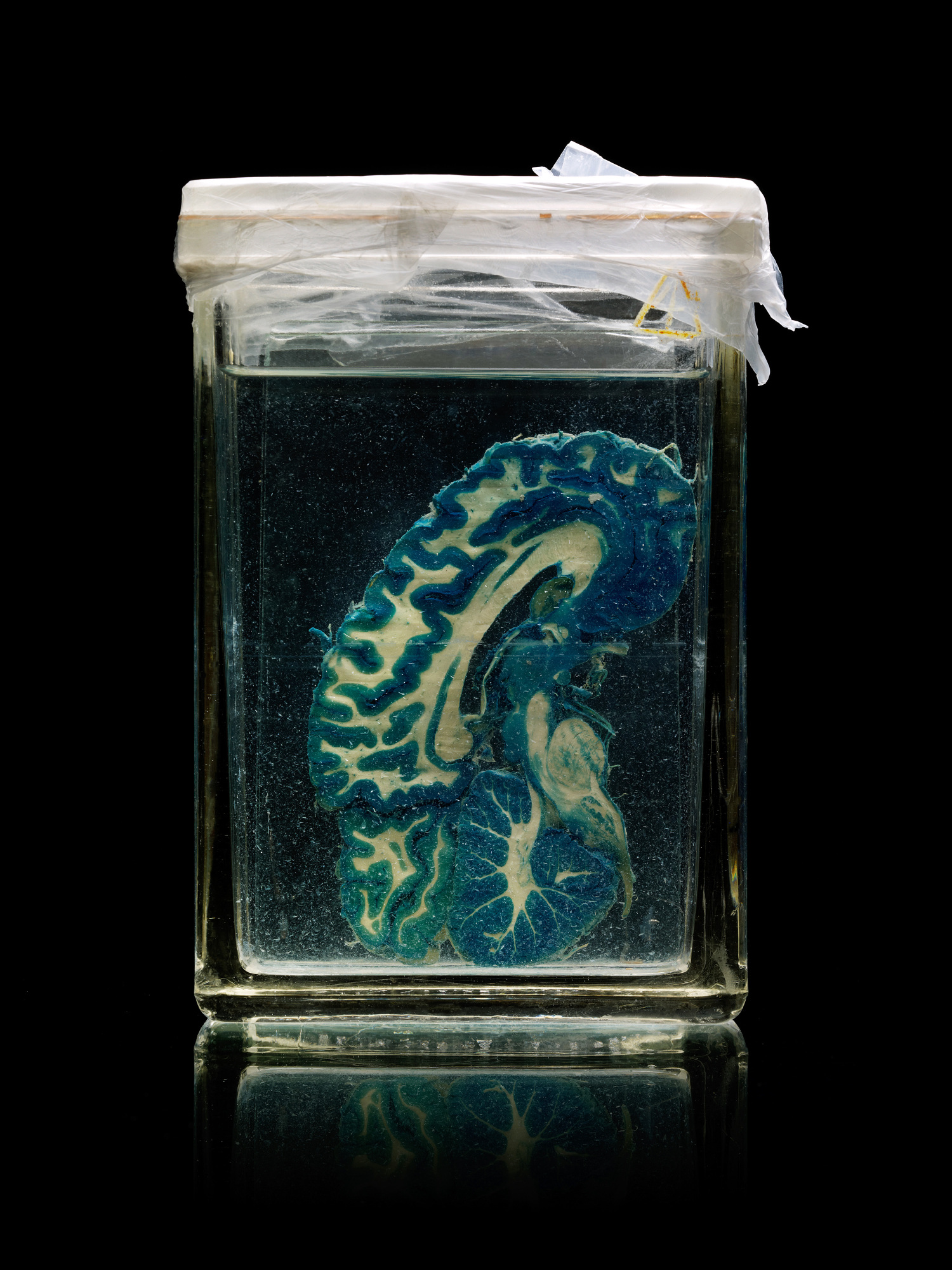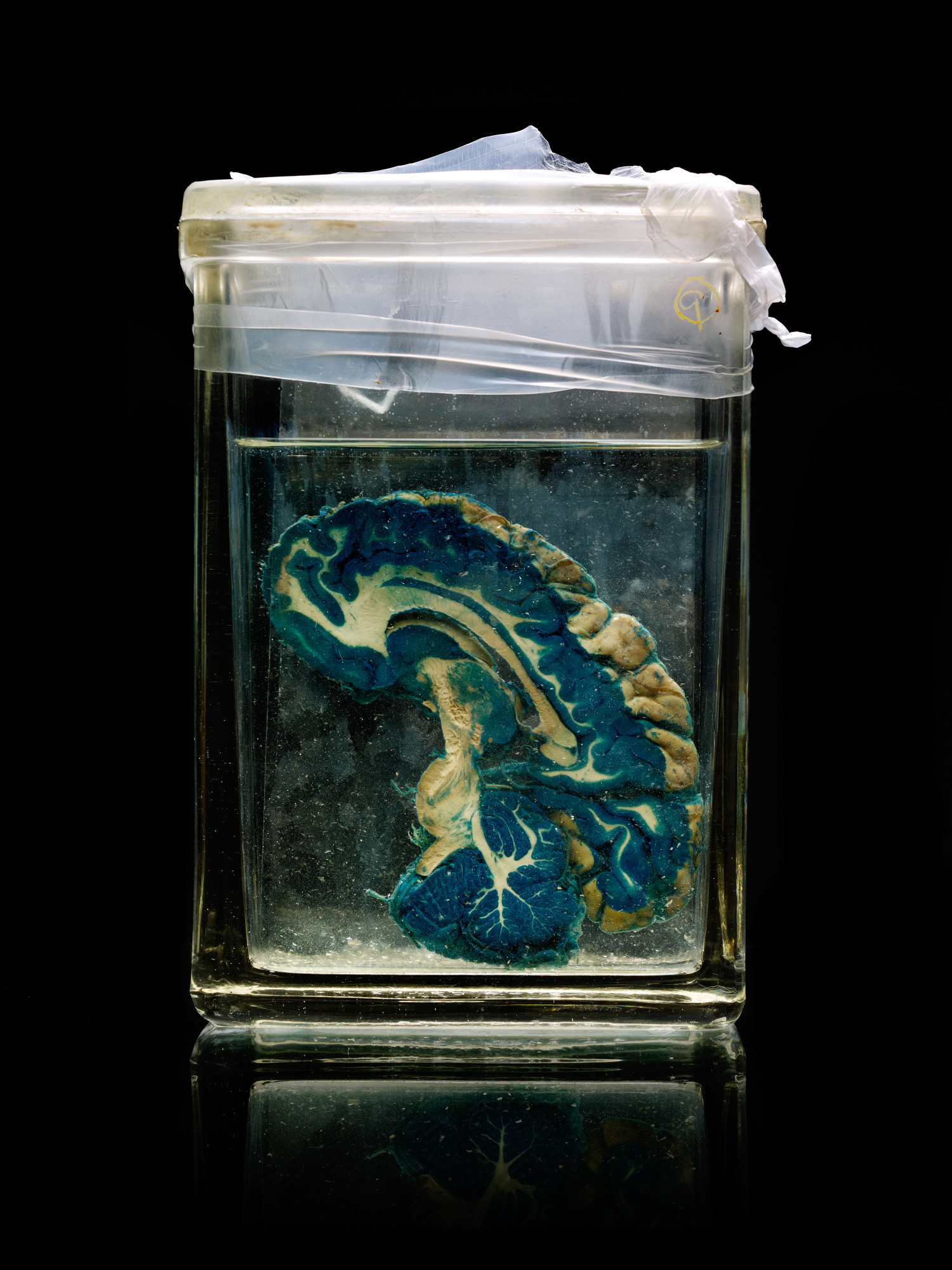The world’s largest collection of malformed brains
These cross-sections of a human brain were used for teaching. The collection had been neglected for decades when photographer Adam Voorhes first visited, in 2011. These images are taken from a book he published about the brains, coauthored with Alex Hannaford.

The University of Texas has one of the world’s largest collections of preserved abnormal human brains. The 100 or so jars contain brains that once belonged to patients at the Austin State Hospital, a psychiatric facility. They were amassed over three decades by Coleman de Chenar, the hospital’s resident pathologist, starting in the 1950s.
Tim Schallert, the collection’s curator, believes the collection can be used not just for teaching, but also to help researchers come to a better understanding of what causes a number of psychological and neurological disorders.


One jar, labeled “Down’s Syndrome” (above), appears to contain more than one brain, and possibly other internal organs. Many jars are missing labels; little is known about the people whose brains these were.
Some abnormalities are obvious, like lissencephaly, or “smooth brain,” a neurological disorder that usually leads to an early death. Many of the brains appear superficially normal but reveal swelling or hemorrhage once dissected.


The collection has been scanned by MRI machines. Schallert hopes to recover and sequence DNA from the brains in order to correlate genetic abnormalities with physical ones, even without patient records.

